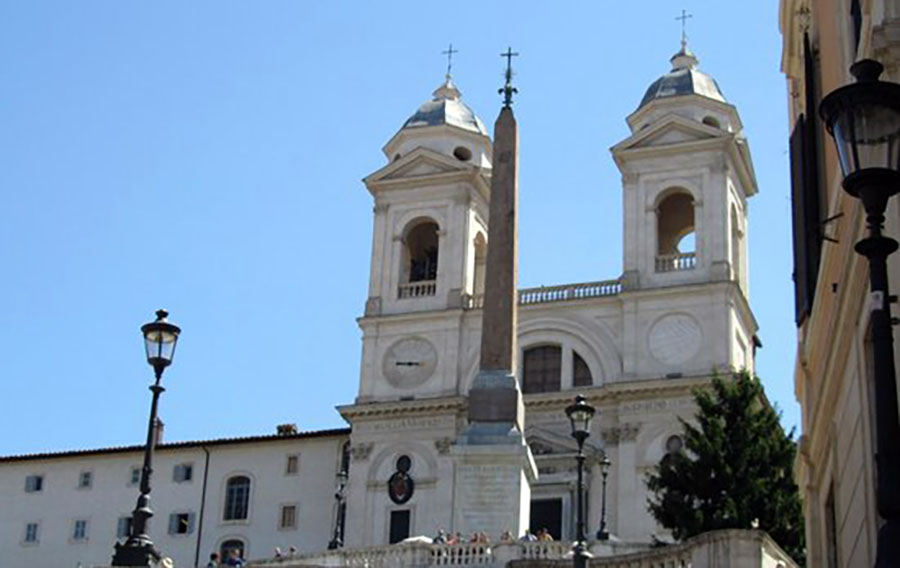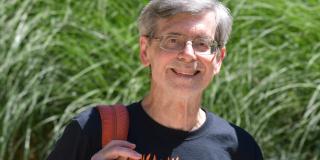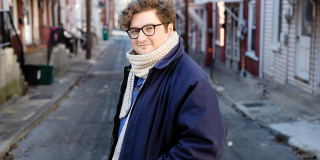
Isabel Heslin ’21 traces the movement of an Italian landmark from the Villa Ludovisi to Rome’s Spanish Steps
Isabel Heslin knew she wanted to study ancient history since the age of 10. She was always interested in archaeology, specifically as it pertained to Egypt and areas of the Middle East.
“When I got to college my first year, which was at the College of Charleston in South Carolina, I was introduced to the classics, and from there, I became really interested in the interdisciplinary aspect of it,” explains Heslin, a junior at Lehigh with a dual major in classical civilizations and anthropology and a minor in history.
After transferring to Lehigh, Heslin continued her interest in classics and immersed herself deeply in the history of ancient Mediterranean civilizations, primarily focusing on the history and languages of ancient Greece and Rome.
“I study all aspects of classical civilizations such as their literature, gender roles, conflict and economics, to name a few,” she says. “I am also an anthropology major, which gives me the chance to study all aspects of human history and culture spanning over a much larger time frame. I am also not limited to studying just one area of the world, which I also get to branch out in with my history minor, where I have been primarily focused on Middle Eastern and African histories.
“Both my majors and minor combine to give me a unique understanding of the historical and contemporary world. I am planning on pursuing a master’s and doctorate in Egyptology,” she continues, “and my undergraduate studies are preparing me for diving deep into the multidisciplinary study of ancient Egyptian history.”
Heslin has also discovered opportunities to take her interests beyond the classroom. She has been working on a formal blog post for the Google Arts and Culture website for the Ludovisi archives. After contacting Professor T. Corey Brennan from Rutgers University about possible research opportunities over the summer, Heslin met with him virtually and he recommended she research the Sallustiano Obelisk, located in Rome, because of her interest in ancient Egypt and the classics.
“It seemed like the perfect way to blend together both of my interests,” Heslin says. “So, my research was on the Sallustiano Obelisk, located at the top of the Spanish steps in Rome. I worked with Professor Brennan and Princess Rita Boncompagni Ludovisi on the private archives from the Ludovisi family and villa (Villa Aurora in Rome)."
The entirety of the Ludovisi archives was recently digitized, and the Sallustiano Obelisk is ex-Ludovisi and stayed with them for hundreds of years, according to Heslin.
“Professor Brennan would find some documentation regarding the history of the obelisk, but with hundreds of thousands of materials, it was hard to pin down those that were dedicated specifically to the obelisk,” Heslin says. “We were able to work with documents, images (drawings) and maps from the 16th and 17th centuries so, in rough Italian, that was dedicated to trying to tell the history of the obelisk, which has never been told before. We were able to pull out some really interesting information about the obelisk and its history that I am excited for people to read about.
Heslin’s research process took the entire summer.
“Transcribing and translating 17th-century Italian is not exactly an easy task,” she says.
In February 2021, there will be a virtual conference on Pope Gregory XV Ludovisi dedicated to the new discoveries within the Ludovisi archive. In preparation for the conference, she will be prerecording a presentation about her findings, which will be shown during the conference. Depending on the status of the pandemic in the upcoming spring semester, she hopes to spend a semester abroad completing her classics major.
Heslin hopes more material will come to light regarding the obelisk, as a lot of its history, which spans thousands of years, is still a mystery.
“The archives are so vast that the majority of information has still not been reviewed, as it might be the largest private archive in the world,” she says. “I do want to continue researching other artifacts, artwork and aspects of the Ludovisi archives because there are so many more amazing stories to tell.”
Editor’s note: Heslin’s research is available to read on the Villa Ludovisi website, https://villaludovisi.org/
-Leslie Feldman






